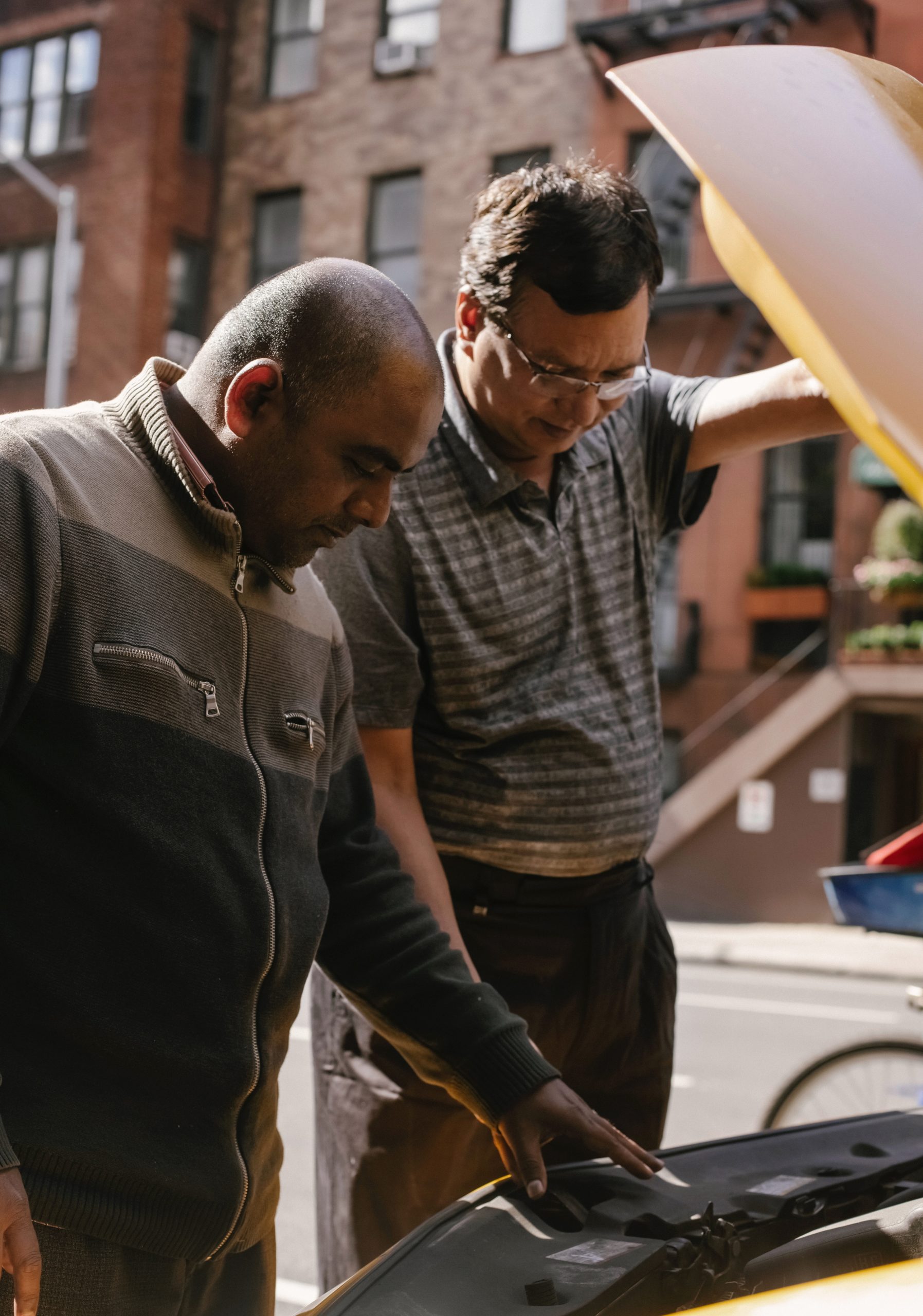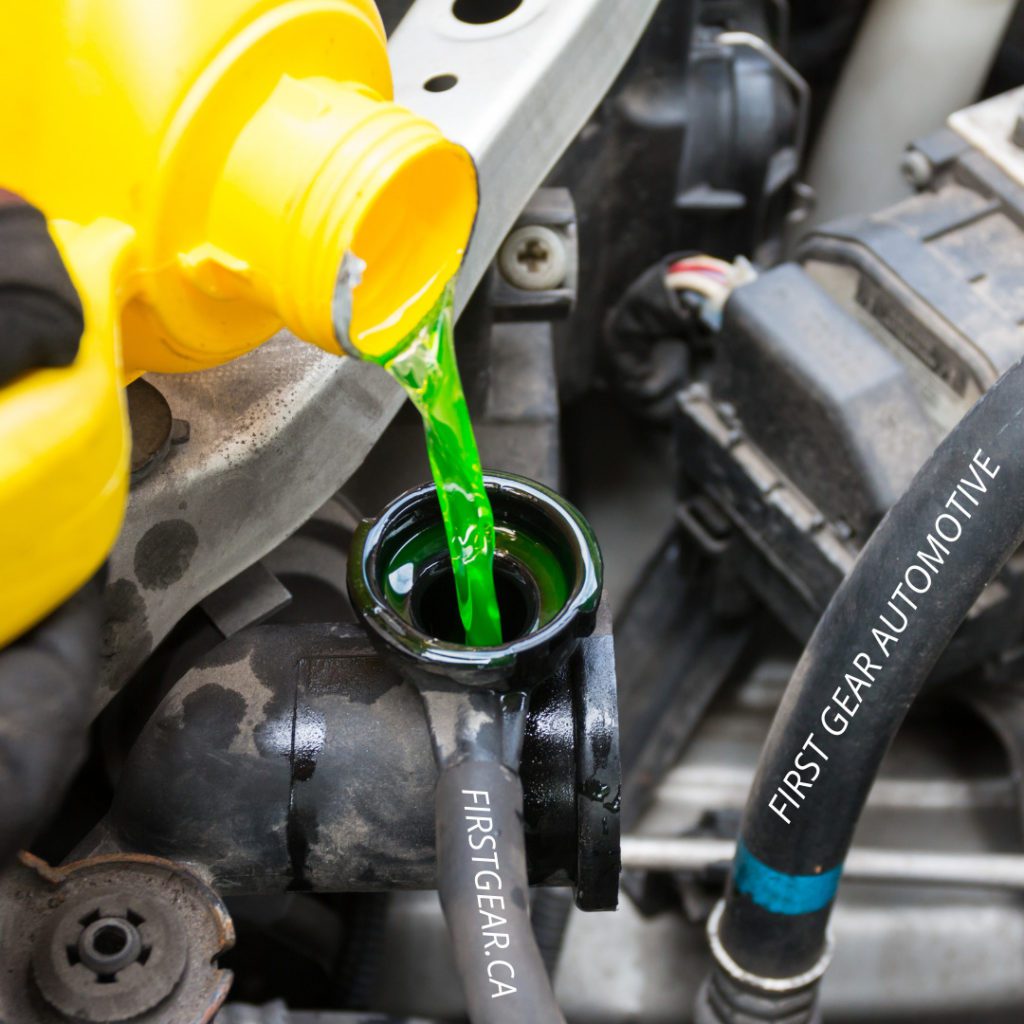When Your Car Overheats; Causes, Prevention and What to Do if it Happens.

Summer is for exploring. For heading to cottages, camp sites, beaches and picnic spots. It’s also the season for cars to overheat. There are many reasons why a vehicle overheats but all are basically due to the cars cooling system not allowing heat to leave the engine compartment. This often means there is a leak or block somewhere. Components of the cooling system such as hoses, gaskets and water pumps can spring a leak through regular wear and tear. This can usually be avoided with regular maintenance. If you have come to First Gear for our Spring Maintenance or Multi Day Road Trip Packages we would have checked the cooling system. We also check your vehicles coolant and oil with every oil change. In this post we tell you what might cause your vehicle to overheat, ways you may prevent it and what to do if it happens.
A vehicle often overheats when in traffic for long periods of time. Driving in stop and go traffic can put a great deal of stress on your cars cooling system and many cause it to fail. If you are in traffic and the temperature gauge starts rising, shift into neutral or park and rev the engine a bit. Doing so may seem counter intuitive but it causes the water pump and fan to speed up which draws more air and liquid through the radiator helping to cool things off. When in stop and go traffic try not to ride the brake. Brake drag increases the load on the engine and causes it to heat up more.
How To Tell If Your Car Is Overheating
• You can see steam which often looks like smoke pouring out from under the hood.
• The engine temperature gauge spikes to the red or “H”
•If you notice a strange smell coming from the car, especially near the hood. It could be either leaking oil or coolant. Oil will produce a burnt smell and coolant has a sweet smell.
Possible Causes of Overheating

Low Coolant/Coolant Leak
This is the most common reason your vehicle overheats. The coolant is the liquid that keeps the engine cool. In a 4-cylinder engine running at 2,000 rpm (revolutions of the crankshaft per minute) an explosion takes place more than 15 times per second in each cylinder. These explosions produce a lot of heat. In order to control the heat the engine block and heads have passages for the coolant to circulate through to transfer the heat from the engine. The coolant passes through a hose from the engine to the radiator. The heat from the coolant passes through the radiator and is transferred to the air. Now the coolant is at a lower temperature and travels back to the engine. If there is not enough coolant to complete this cycle, the engine does not get cooled down and overheats.
Radiator Cap
A radiator cap looks simple but is critical for properly operating your cooling system. As the engine heats up and the coolant expands it becomes pressurized. Once the pressure builds to a specific level the radiator caps pressure relief valve allows for the excess pressure to escape. If the cap become faulty it may not be able to hold the pressure in the cooling system, causing the engine to overheat.
Thermostat
The thermostat in your car is a heat sensitive mechanical device that opens to release coolant once it reaches a certain temperature. Once your vehicles engine reaches a certain temperature the thermostat opens to pass the coolant from the engine to the radiator. If the thermostat fails to open the coolant can’t get to the radiator and the engine will overheat as a result.
Oil
Like coolant oil helps dissipate heat. If there is not enough oil coursing through the engine it can cause the engine to overheat. It can also cause extreme engine wear and a massive bill which is why First Gear keeps stressing the importance of regular oil changes.
If Your Vehicle Overheats You Should:

1. Turn on the heater. It sounds strange but it draws the heat away from the engine and into the passenger compartment which lessens the strain on the cooling system. This may be enough to reverse the overheating. Keep an eye on the temperature gauge, to make sure it returns to and stays at normal.
2. Pull over. If turning on the heater doesn’t work after a few minutes, pull over and turn off the engine. Do not do anything for 15min while the engine cools. If the coolant in the car has over heated it could be up to 230 degrees. Opening the hood right away puts you at risk for being sprayed with hot liquid or steam. You will want to give everything a chance to cool down.
3. Add coolant. After waiting 15 mins touch the hood, if it is still really hot, give it some more time. If it is cool to the touch open the hood and locate the radiator cap. Put a towel, (blanket or scarf if you don’t have a towel on hand) over the cap and loosen it a quarter of the way in order to release some of the pressure before opening the cap fully. Once open add coolant slowly until it reaches the “full” line. Add left over coolant to the small, clear overflow reservoir mounted to the side of the radiator. Put the cap back on, close the hood and start the car. If the temperature gauge comes back to normal you can continue driving while keeping an eye on the gauge. If it climbs back up you will have to pull over again and call road side assistance.
4. Drive to First Gear Automotive. Putting the coolant in the car does not solve the problem, it simple buys you time to drive safely to First Gear Automotive so we can diagnosis what caused the car to overheat in the first place. That said, you don’t want to drive very long or very far with the engine overheating. Doing so risks catastrophic engine failure and a repair bill in the thousands of dollars.
